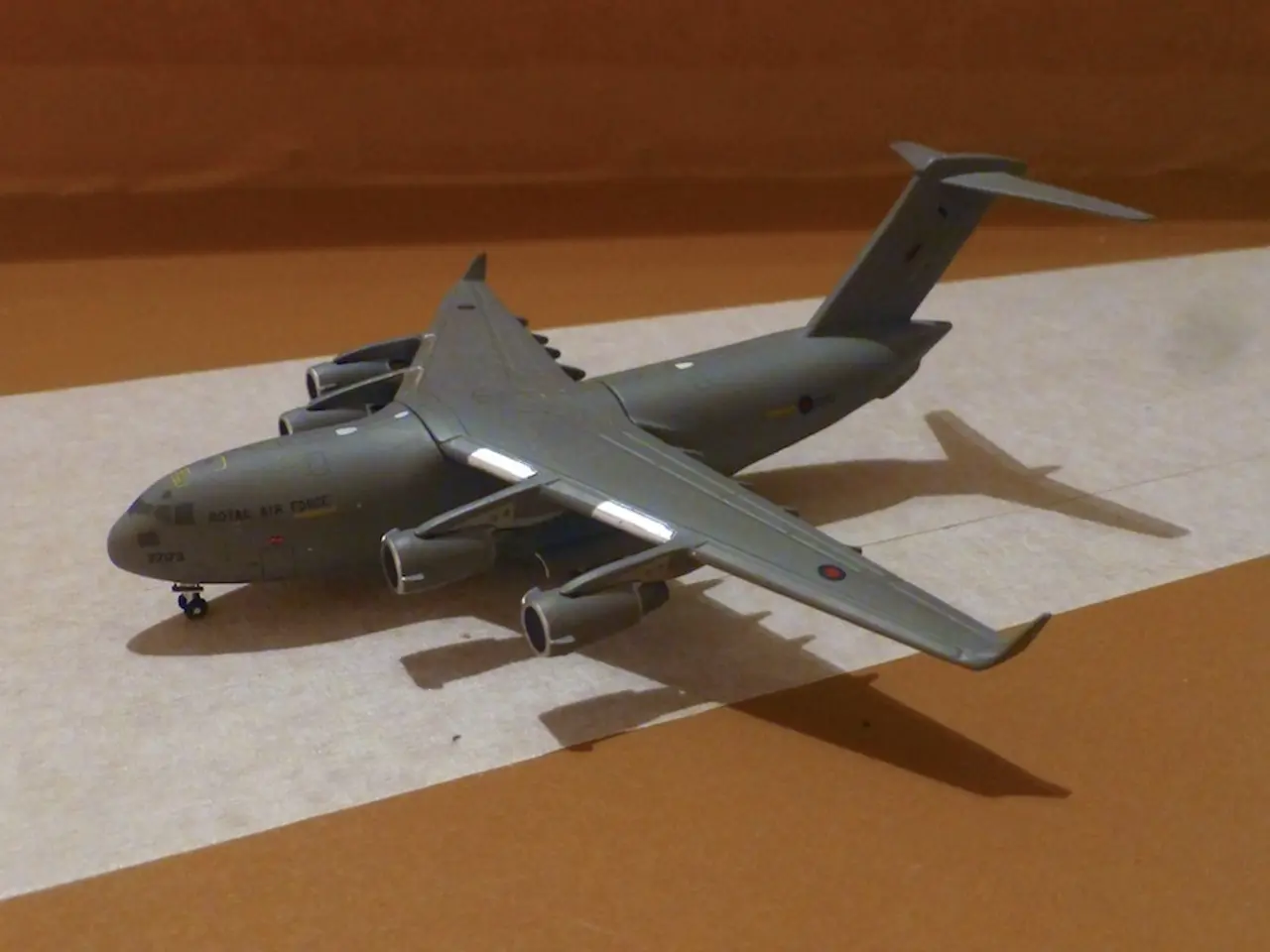US Air Force Pilots Conduct Inaugural Flight of Australian F-35 in Pacific Region
US Air Force and RAAF Enhance F-35 Interoperability During Talisman Sabre Exercise
The United States Air Force (USAF) and the Royal Australian Air Force (RAAF) are strengthening their alliance through a unique F-35 interfly exercise during the Talisman Sabre exercise. The goal of this collaboration is to increase interoperability and normalize coalition operations involving fifth-generation F-35 jets.
During the exercise, US pilots are flying Australian F-35s, seamlessly integrating with their RAAF counterparts. This interoperability is a testament to the shared cockpit architecture, training protocols, and systems standardization of the F-35 across allied services. According to Maj. Justin "Spike" Lennon, one of the U.S. Air Force pilots participating in the exercise, the only real difference is the radio voice.
The RAAF's Lightning-X initiative is driving this deep integration, allowing coalition pilots to be treated as if they were RAAF aircrew for operational considerations such as medical, physiological, and human factors. This level of integration reflects the close partnership between the two forces.
This interoperability has significant implications for future conflicts. In a prolonged conflict, where aircraft can fly more hours than pilots can operate, any coalition pilot can fly any coalition aircraft. This increases operational agility, global reach, and combat power of the F-35 coalition.
The F-35 interfly event in Australia also serves broader strategic goals. It aims to deter adversaries, validate real-time coalition warfighting readiness, and strengthen alliances in the Indo-Pacific region. This year's Talisman Sabre exercise, the biannual exercise primarily between the U.S. and Australia, involves 19 nations, the most ever, with 30,000 total military personnel.
In addition to the US and Australia, Seaborn F-35s from the U.S. and U.K. aircraft carriers are participating in Talisman Sabre. American F-22 Raptors from the 199th Air Expeditionary Squadron have also been deployed to Australia's Northern Territory for the exercise.
Lennon stated that normalizing Interfly gives commanders additional options for agility and versatility in a future conflict. This major step towards coalition force integration, operational flexibility, and enhanced combat effectiveness between the US and Australian air forces, with contributions from other allied nations as well, is a significant development in the Indo-Pacific region.
The training for the F-35 interfly event included a day of classroom work and simulator training. Lt. Col. Johnny "Yardsale" Rose and RAF Squadron Leader Daniel "Goffy" Goff participated in the exercise, demonstrating the commitment of multiple nations to this collaborative effort.
As Talisman Sabre continues, the F-35 interfly exercise is a testament to the growing cooperation between the US and Australian air forces and a step towards a more integrated and effective coalition force in the Indo-Pacific region.
The US Air Force and RAAF are enhancing their F-35 interoperability during Talisman Sabre exercise, aimed at increasing coalition operations involving fifth-generation F-35 jets. US pilots are flying Australian F-35s, showcasing the shared systems standardization across allied services.
This collaboration reflects the close partnership between the two forces, with the RAAF's Lightning-X initiative allowing coalition pilots to be treated as RAAF aircrew. The F-35 interfly event has significant implications for future conflicts, boosting operational agility, global reach, and combat power.
Seaborn F-35s from the US and UK aircraft carriers, along with American F-22 Raptors from the 199th Air Expeditionary Squadron, are also participating in Talisman Sabre. The training for the F-35 interfly event involves classroom work and simulator training, demonstrating the commitment of multiple nations to this collaborative effort.
As Talisman Sabre continues, the F-35 interfly exercise serves broader strategic goals, aimed at deterring adversaries, validating real-time coalition warfighting readiness, and strengthening alliances in the Indo-Pacific region. This growing cooperation between the US and Australian air forces is a significant development in the Indo-Pacific region, fostering a more integrated and effective coalition force.
As the practice of interflying continues to normalize, it provides commanders with additional options for agility and versatility in future conflicts, all while strengthening the military-industrial-finance-aerospace complex's capabilities in the region.







